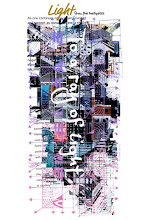The symbols of the two snakes are found in folklore and excavated items around the world, and have become a universal symbol. In connection with this, the rainbow snake is also a symbol.
In a dance ritual that depicts the myths of the Aboriginal Yolngu tribe in Australia, a male dancer has two special sticks that symbolize the rainbow serpent. In other words, here, rainbow serpent = 2 sticks = 2 snakes.
Aborigines also have stories of the rainbow serpents Yurlungur, Eingana, Ungud, and Wanambi, and the same Oceania Fiji also has the story of the rainbow serpent Degei.
There is also a story about the rainbow snake Mau (Mau) in West Africa. A rainbow serpent can also be seen in Voodoo, a black art in West Africa, where the snake god Danbara Wade is his husband and his wife is the rainbow serpent goddess Aida Wed. These two snakes are depicted as symbols of voodoo.
In Voodoo, you can also see two snakes intertwined. In Greek mythology, Hermes has a staff of hermes with two serpents wrapped around it.
Hermes God.
Two snake sculptures can also be seen at the feet of the Greek god Aeon. Aeon also appears in Judaism and Gnosticism.
Shahnameh, Iran's largest national epic, compiled in 1010, features King Zahhak with two snakes on his shoulders.
The Indian snake god Nagaraja (Naga and Naga) is also a figure in which two snakes are entwined. This is the same design as the ancient Chinese gods Fuxi and Joka, again with two snakes.

The symbol of the Paiwan tribe, an indigenous people living in the southern part of Taiwan, is a snake called Hyappoda. In the relief of the ritual pottery in the image on the left below, you can see the relief of two Hyappoda. The wooden carving board on the left side of the image on the right has a face engraved on the head of two 100-step snakes, and on the right side, the face is engraved on the snake body of two 100-step snakes.
At the pyramid complex that is submerged in Chatan , Okinawa, there are two stone statues of snakes that are 20 meters long.
In addition, the shimenawa seen in Japanese shrines is also the appearance of two snakes intertwined, and the appearance of snake mating. The shimenawa is a symbol of thunderclouds, the straw hanging from between them represents rain, and the white zigzag paper shide represents thunder . It is reported that the rainbow serpent also has the power to make it rain.
There is a bridge called Shinkyo on Mt. Nikko in Tochigi Prefecture. According to folklore, Jinjao shoots two red and blue snakes, which are entwined on both banks of the Daiya River and become a beautiful bridge like a rainbow. This bridge is Shinkyo, And it is also called Yamasuge's Jabashi. In this way, two snakes are sometimes seen in folklore, and here the rainbow also appeared as a symbol.
Two snakes can also be seen on the left and right of the lower stairs of the Kukulkan Temple in Chichen Itza, the ancient city of the Mayan civilization in Mexico. Here, when the sun tilts west only during the spring and autumn equinoxes, where the A huge snake appears when it merges with the head image of. Kukulkan is the creator of Maya mythology and is said to have been involved in the creation of mankind three times.
And Kukulkan is the same god as Quetzalcoatl, the serpent god of the Aztec civilization in Mexico. Quetzal is the name of the bird, Coatl is the snake, and the flying snake.
Two snakes and a rainbow symbol can be seen on the flag of the Inca Empire in South America.
Two snakes can also be seen in the Hopi, an indigenous people of North America. Sakamhonau, the main god of the bears in the Hopi, handed three stone plates to the bears in ancient times . , a corn tree is drawn in the center, and some animals are drawn around it surrounded by two snakes. These two snakes symbolize the two rivers that border the land, the Colorado River and the Rio Grande.

In this way, the two snakes are found on the continents of Africa, Europe, Asia, Oceania, and the Americas, and can be seen as a universal symbol.

























0 コメント